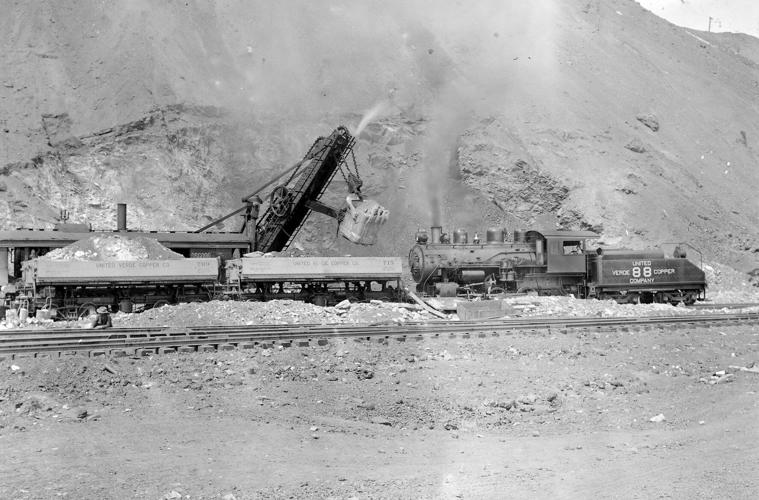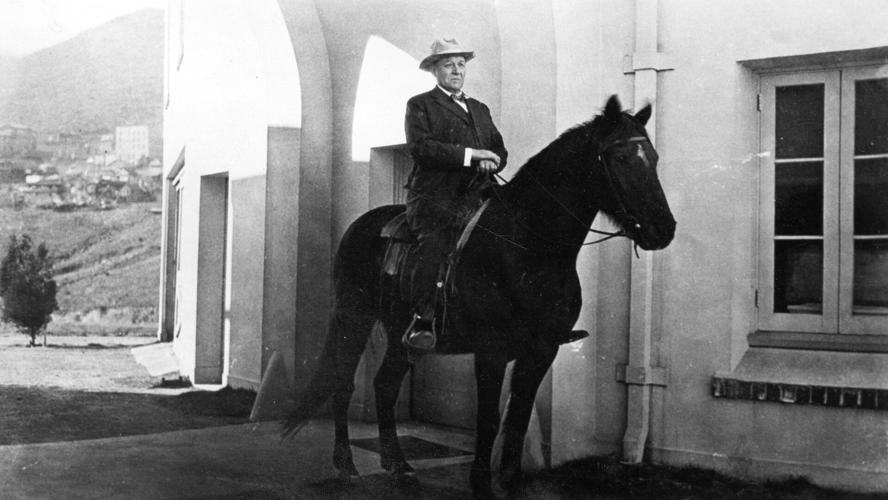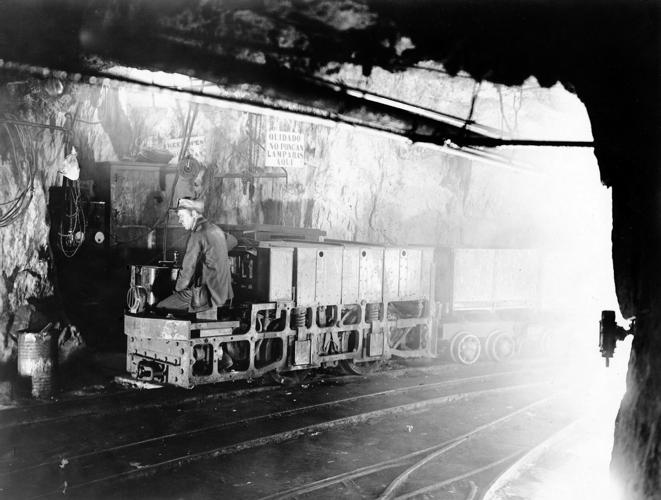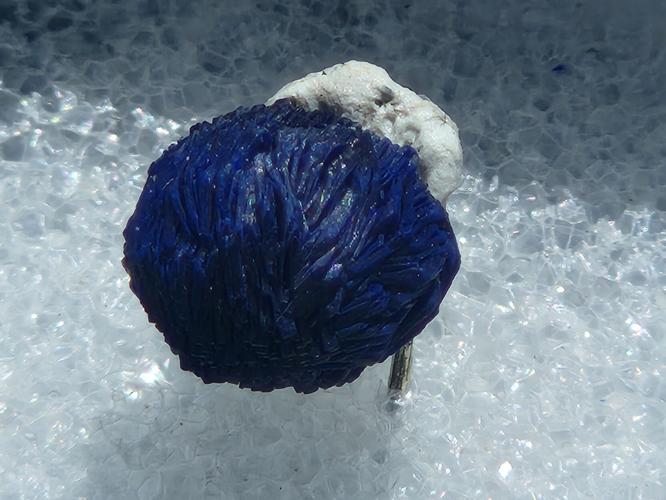William A. Clark, established a solid copper mining operation at the United Verde Mine with smelters onsite at Jerome and later Clarkdale.
Mining accelerated in the Verde Mining District as the area also attracted other mining ventures, including the development of the United Verde Extension Mine (UVX), which began with George W. Hull who organized the United Verde Extension Mining Co. in 1894.
Hull, a resident of Jerome since 1883, sought to capitalize on possible extensions of the United Verde ore body adjacent to the United Verde Copper Mine holdings. He purchased claims west, south and east of Clark’s property through the financial support of Louis Whicher, a New York broker. One of these included the Little Daisy Claim east of the United Verde Mine patented in 1901. The mine was located below the “Big Hole” or United Verde Mine.
The United Verde Extension Gold, Silver and Copper Mining Co. was subsequently formed, followed by a decade of exploration costing $500,000 that revealed weakly mineralized host rocks and small ore pockets. By 1912, after an investment of $500,000, only a few streaks of ore were discovered and mining operations suspended.
Major Andrew Jackson Pickrell, one of the property’s investors convinced James S. Douglas (known as Rawhide Jimmy), son of Dr. James Douglas (Phelps Dodge Co.), along with George E. Tener of Pittsburgh to invest in the Little Daisy Claim. With $300,000, capital development resumed.

James S. Douglas owner of the UVX Mine was nicknamed “Rawhide Jimmy” because of his usage of rawhide to protect the rollers of an incline at a concentrator at Nacozari.
The UVX, a separate distinct deposit that originally was thought to have been the faulted-off apex of the larger United Verde deposit, was discovered in 1914. Geologists later determined that it was a separate volcanogenic ore body. By 1916, 15% copper ore was struck at the 1,400-foot level. Preparations were made to exploit the deposit and, in 1918, a smelter was built one mile south of Cottonwood at Verde, later christened Clemenceau to process ore at the U.V.X.
The UVX Mine, while only one-tenth the size of the United Verde Mine, continued to produce until the ore body was exhausted in 1938. Declining ore production necessitated the closure of the Clemenceau smelter the year prior. The U.V.X. production of high grade copper ore accounted for over 20% of the total copper production in the Verde Mining District. James Douglas amassed $42 million in dividends at the culmination of the venture.

Underground mining battery locomotive at the United Verde Mine circa 1915.
Another mining venture not as successful was undertaken by the Haynes Copper Co. in 1907, involving the Haynes massive sulfide deposit half a mile northwest of the United Verde Mine. This deposit separated by gabbro, an igneous rock formed by slow cooling magma, was originally part of the United Verde ore body. Beginning with a three-compartment shaft sunk to 1,200 feet, including numerous drifts and cross-cuts along with other exploration attempts involving diamond drilling at the 3,700 foot level by the 1930s, produced no significant ore.
During Clark’s 47-year ownership of the United Verde Mine, production included over 20 million tons of ore mined with a recovery of over 2 billion pounds of copper, 900,000 ounces of gold and 33 million ounces of silver. Dividends included $102 million of which Clark and his heirs owned 95% of shares. Phelps Dodge Corp. acquired the United Verde Mine from William Clark’s heirs in 1935. Decline in open pit operations followed due to reduced ore values. Open Pit mining ceased in 1940 after 41.8 million tons of material was extracted. Underground mining replaced open pit mining until operations ended at Jerome on March 23, 1953. The United Verde Mine produced over two- and three-quarter billion pounds of copper coupled with gold and silver production valued at $475 million. The UVX Mine is credited with over three-quarters of a billion pounds of copper with gold and silver production at $125 million.

The United Verde Open Pit in the far background with the Little Daisy Hotel built by James Douglas in 1918 to house mine workers in the upper right and Little Daisy Mine headframes of the UVX below, circa 2022.
Small scale mining operations continued in the area through the early 1990s. From 1954 to 1975, the Big Hole Mining Co. leased the Big Pit at the United Verde Mine from Phelps Dodge, extracting 206,777 tons of ore from small copper veins. Shipment was trucked to Clarkdale, then by rail for processing at the Douglas smelter. Recovery figures included 25.3 million pounds of copper, nearly 2,900 ounces of gold and 200,000 ounces of silver.
Additional mining occurred at the UVX involving underground exploration and development conducted by the A.F. Budge Mining Ltd. from 1989 to 1992. Recovery from 76,000 tons of ore including gold-bearing siliceous flux amounted to 21,000 ounces of gold and 174,000 ounces of silver.
At 50 tons per day, a silica-rich flux, containing 0.1 to 0.25 oz. Au/ton, was delivered by truck to railhead at Clarkdale for shipment to the Phelps Dodge's Hidalgo smelter in New Mexico. This operation was terminated in late 1992 after recovering approximately 21,000 ounces of gold and 174,000 ounces of silver from about 76,000 tons of ore.
Today, Jerome’s economy is based upon tourism capitalizing on its mining history and the town’s unique geological topography which may again see resurgence in mining should the discovery of another mineral deposit prove profitable.

Miners drilling at the United Verde Open Pit circa 1920s.

Headframes at the United Verde Mine as seen off Jerome Perkinsville Road.

A thumbnail of an azurite ball specimen found at the United Verde Mine.











